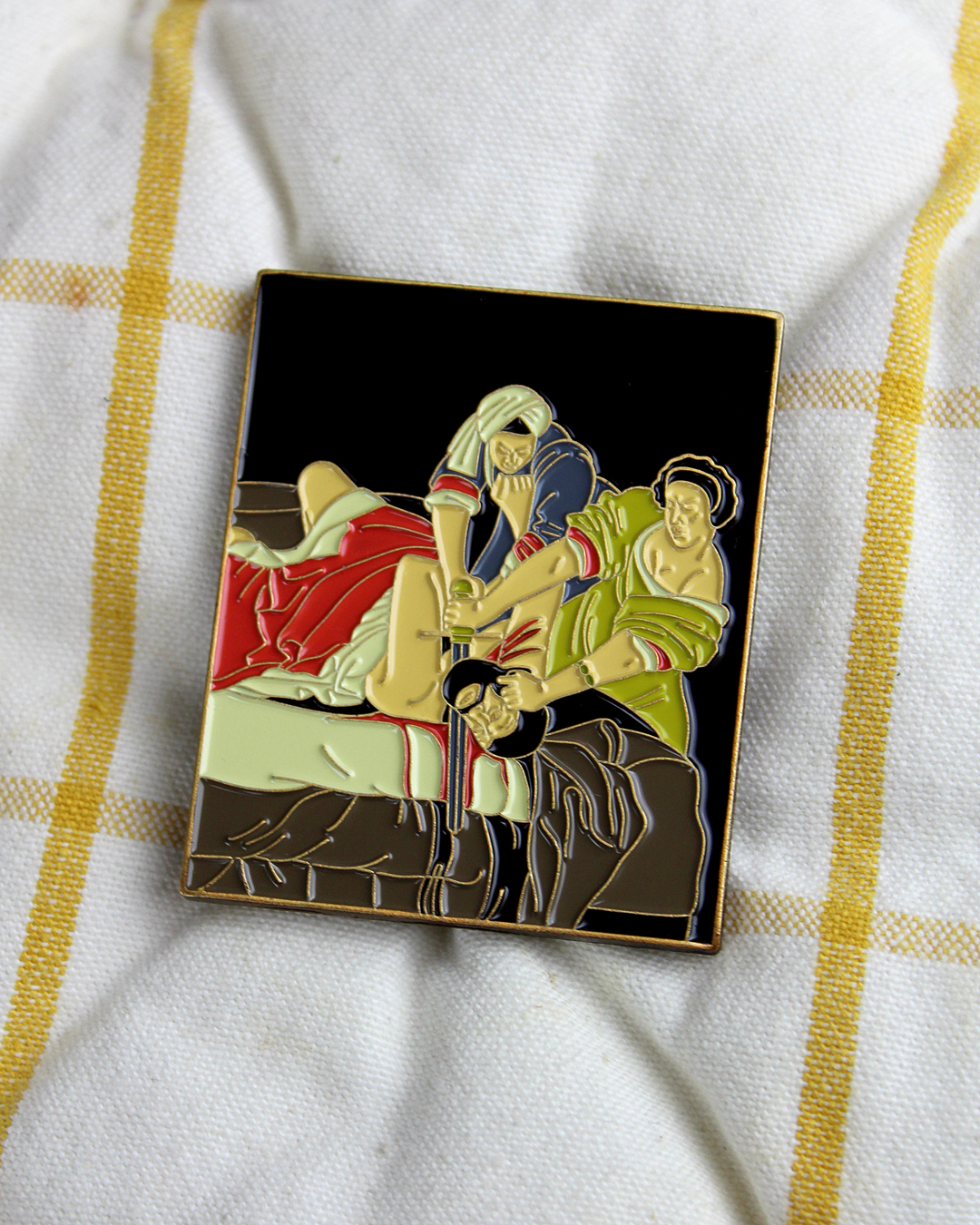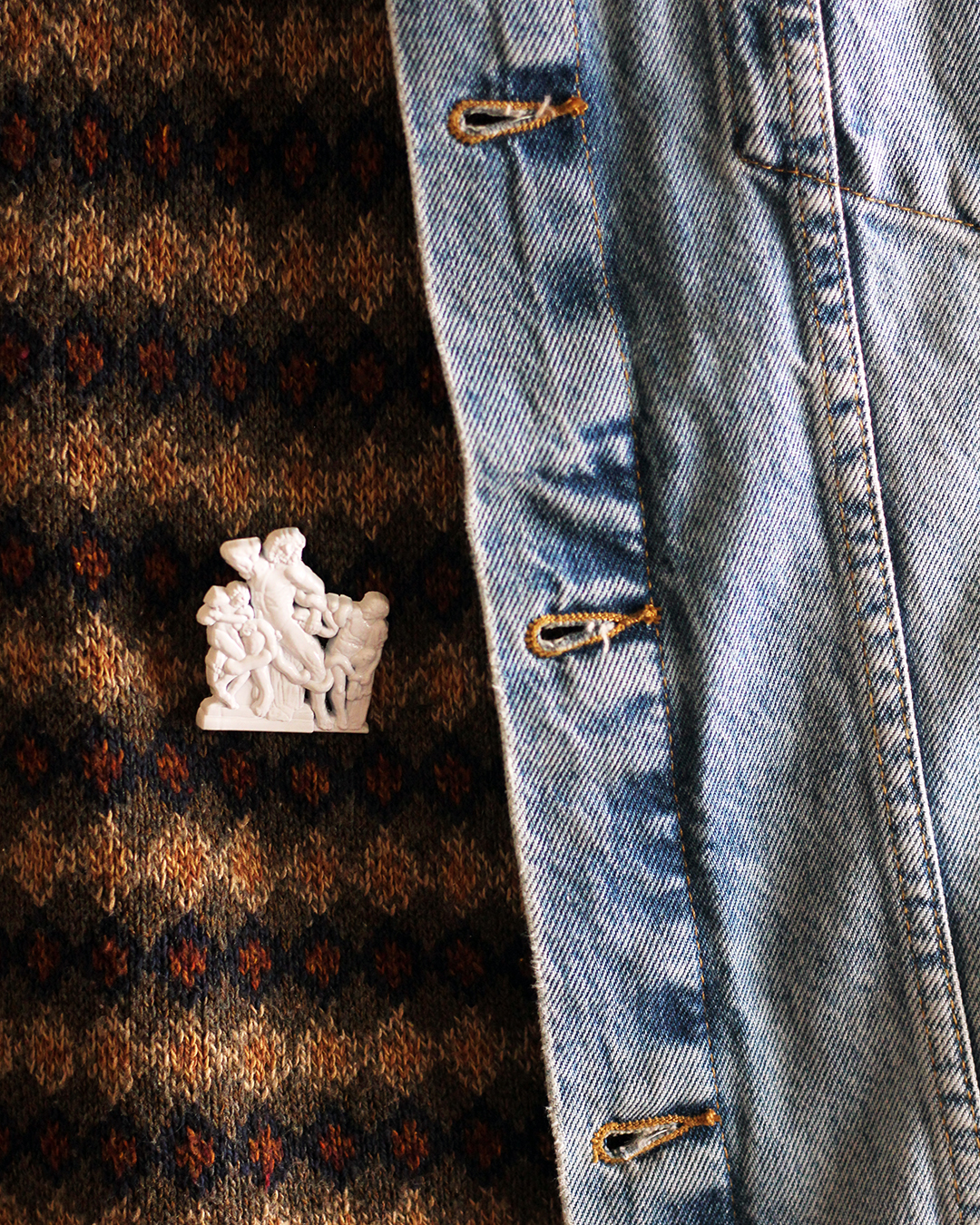- Shop
- The Ambassadors • Pin
The Ambassadors • Pin




The Ambassadors • Pin
0.78" x 1.3"
Soft Enamel Pin
Single Posted
Rubber Clasp
Inspired by The Ambassadors by Hans Holbein the Younger
Upgrade to Deluxe Locking Pin Clutches HERE.
0.78" x 1.3"
Soft Enamel Pin
Single Posted
Rubber Clasp
Inspired by The Ambassadors by Hans Holbein the Younger
Upgrade to Deluxe Locking Pin Clutches HERE.
Hans Holbein the Younger (c. 1497-1543) was a German printmaker and painter who is considered one of the most skilled portraitists of the 16th century. His 1533 painting The Ambassadors features two such meticulous portraits, alongside a still life of symbolic objects, including a lute, a hymn book, a glove, and a sundial — a grouping that has inspired continued debate about the painting’s larger meaning. It is most well known, however, for its anamorphic, distorted skull in the lower center of the composition. A mode of representation invented in the Early Renaissance, the skull can only be accurately perceived when viewed from a high angle on the right, or a low angle on the left. Its inclusion is typically understood, though still puzzled over, as a memento mori, a symbolic reminder of the inevitability of death.
Learn more about the work that inspired this pin HERE.









